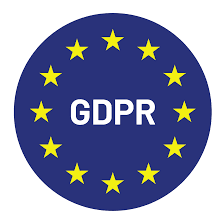Aug 1, 2025
In 2025, fashion retailers operate in an omnichannel battlefield. Consumers browse on Instagram, purchase through apps, compare prices in - store, and expect next - day delivery or same - day pickup. In this hyper - connected reality, many brands still fall back on one familiar lever to drive sales - discounting.
But here’s the truth no one wants to say out loud: blanket discounts are doing more harm than good. Especially for omnichannel fashion retailers, across both emerging and mature markets, indiscriminate price cuts are eroding value, brand equity, and profitability.
This isn’t a warning against all discounts. It’s a wake - up call to rethink how and where they’re applied.
Discounting: The Easy Button That’s Now Dangerous
In the early 2010s, discounts were a growth lever. Flash sales, festive promos, and end - of - season clearances helped retailers acquire customers and manage inventory.
But in 2025, the playbook has flipped:
Consumer price sensitivity has risen - but so has fatigue from constant markdowns.
Algorithms on marketplaces and price - comparison apps amplify price wars.
Omnichannel retailing introduces complexity that blanket discounts can't account for.
Fashion shoppers today don’t just see a discount. They compare it against:
What they paid last time
What their friend paid on a different channel
What the same brand is offering on its app vs. in - store
And if there's inconsistency or confusion? Trust erodes. Conversion drops.
The Real Cost of Blanket Discounts
Let’s break down what fashion retailers lose when they hit "20% off sitewide":
1. Margin Dilution at Scale
A 20% discount doesn’t just reduce unit profit. It reduces category profitability - especially when applied to high - turnover, in - demand items that didn’t need a markdown to sell.
2. Devaluation of Brand and Perceived Quality
For omnichannel brands, inconsistent discounting across platforms can make full - price stores look like a rip - off. Once a shopper anchors your brand at “30% off,” full price feels like a penalty.
3. Increased Returns and Basket Volatility
Discounted purchases often lead to impulsive buys. Impulsive buys lead to higher return rates, especially in fashion categories like footwear, occasion wear, or accessories.
4. Loss of Customer Insight
If every campaign is “storewide 25% off,” you never learn which product, category, or segment actually converts on its own. Blanket offers mask real performance.
Omnichannel Fashion Needs Precision, Not Panic
Fashion is not FMCG. Shoppers don’t buy fashion weekly or daily. Their decision journey includes browsing, consideration, wishlist saves, peer influence, and more.
In 2025, successful omnichannel fashion retailers are moving away from mass discounting toward data - led precision marketing:
Personalized Offers: Based on purchase history, size preferences, and return behavior.
Channel - Specific Incentives: App - only coupons, store - specific bundles, or WhatsApp flash deals.
Behavior - Triggered Nudges: Cart reminders, wishlist prompts, back - in - stock alerts.
Segment - Based Promotions: First - time shopper discounts, high - value customer loyalty perks, or “win - back” offers for churned users.
This isn’t theoretical. It’s already in motion.
Case Study 1: Mid - Sized Apparel Chain in KSA
A regional fashion retailer with both mall stores and an eCommerce app had been running flat 25% off campaigns every month. While sales spiked, margins kept shrinking.
By implementing a CDP - led segmentation strategy, they began targeting:
High - LTV customers with early access to new arrivals (no discount)
Cart abandoners with 10% incentives valid for 48 hours
Low - frequency buyers with category - specific recommendations
In just one quarter, the brand saw:
30% decrease in discount - driven transactions
22% uplift in net revenue per customer
15% reduction in returns
Case Study 2: Indonesian Fashion Marketplace Seller
A D2C fashion label on a major marketplace platform was caught in endless price battles. To break the cycle, they ran a test: full - price listings for core items, but applied micro - promotions on accessories or off - season colors.
They also experimented with bundling (buy a tunic, get 50% off on hijabs), which raised AOV without blanket markdowns.
Outcome:
Higher conversion on bundles than individual discounts
Better inventory movement across colorways and sizes
Clearer insights into which products needed discounting and which didn’t
What Should Fashion Retailers Do Instead in 2025?
Discounting will always have a place - but in 2025, the smartest retailers treat it as a surgical tool, not a sledgehammer. Here’s what matters now:
1. Differentiate Between Discount Need vs Discount Habit
Ask: Is this product discounted because it’s underperforming - or because we always run promos? Challenge the reflex.
2. Leverage Data to Segment Shoppers Intelligently
Not all shoppers are discount seekers. Some prioritize exclusivity, others convenience. Segment based on lifecycle, value, and behavior.
3. Test Offers in Micro - Bursts, Not Blanket Campaigns
Instead of running a 2 - week 30% sale, try a 48 - hour targeted promo to churned shoppers only. Track ROI and replicate what works.
4. Create Value Beyond Price
Offer early access, limited editions, styling content, or flexible delivery. Emotional drivers often outweigh rational discounts - especially in fashion.
5. Measure Promotional Effectiveness Holistically
Don’t just track redemption. Look at ATV, LTV, repeat rate, returns, and margin impact. True performance lies beyond immediate conversion.
Conclusion: Discounts Won’t Save You. Data Will.
In omnichannel fashion retail, blanket discounts are no longer a safe bet. They confuse customers, crush margins, and dilute long - term loyalty.
What works in 2025 is precision - personalized, timely, context - aware engagement that respects both the shopper and the brand.
It’s time for fashion retailers to retire the spray - and - pray playbook. Replace it with one built on segmentation, signals, and smart experimentation.
Because the brands that win this year won’t be the ones who shouted the loudest with a sale.
They’ll be the ones who listened closest - and acted with intent.











